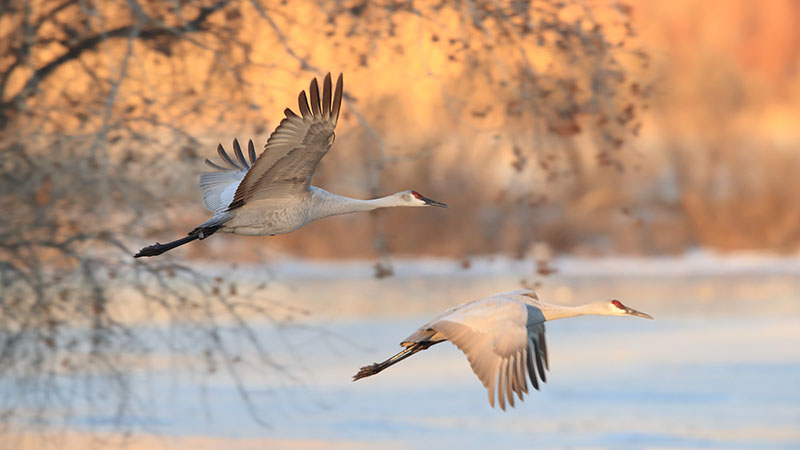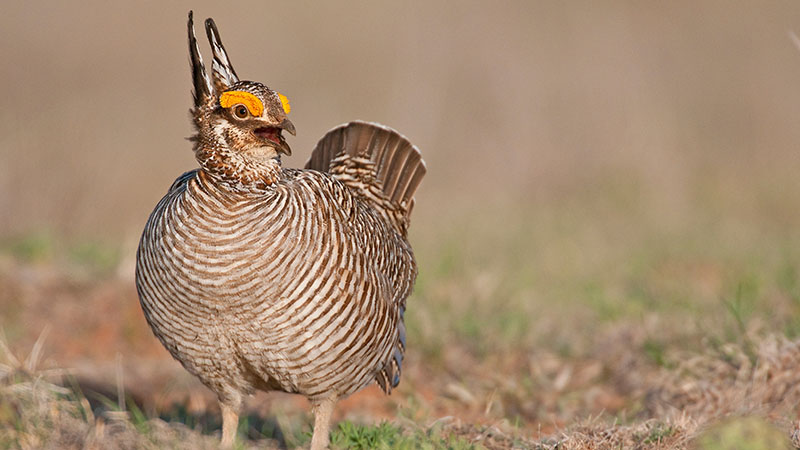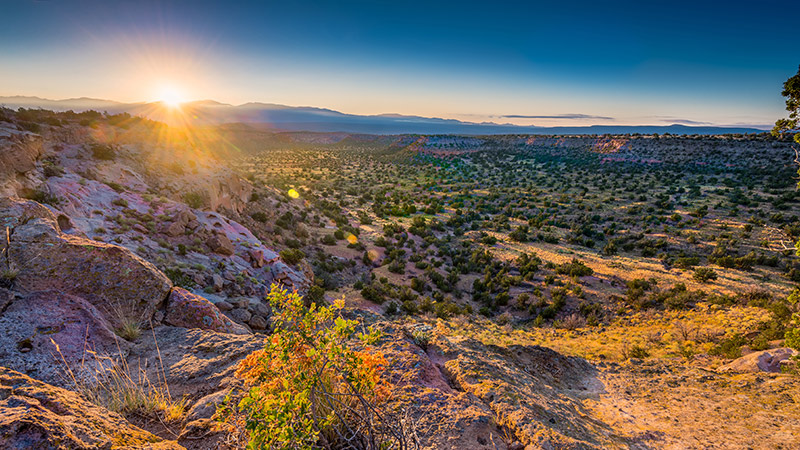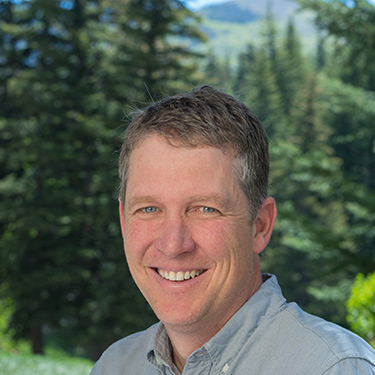February 21, 2023
If you’re reading this, you likely have a good understanding of the immense challenges ahead for the places we love in the West. Climate change is not just bringing warmer temperatures to our spectacular region, it is also causing less rain and snowfall, creating a double whammy of drier and hotter in a region already defined by aridity. On top of that, we are losing natural areas to development at a rapid pace – one football field worth of land every 2.5 minutes. Development is not just from the demands of a growing population but from an oil drilling boom followed by the imperative to rapidly develop clean energy.
This high rate of habitat loss exacerbated by climate change isn’t something we are waiting to experience in the future. It’s already happening.
We have 3 billion fewer birds in North America right now than we did 50 years ago, according to a study last year by the North American Bird Conservation Initiative, and over half of our bird species are currently shrinking. Even beloved species like the Western meadowlark, which we think of as common and abundant, are actually in decline.
Wildlife and wild places are part of our lives in the West, deeply important to the cultural and economic livelihood of our communities, but the challenges ahead — maintaining healthy lands, conserving abundant wildlife species, and minimizing extinction — are enormous. Yet amid the news of declining bird species, we’ve seen a ray of hope: investment in habitat works.
Investing in conservation is effective
Wetlands and waterbird populations actually increased by 34% and 18% over the same period we saw drastic loss of birds in all other habitats including grasslands and forests.
Why? A big part of the story is that investment in habitat conservation and restoration works.
Providing regular, recurring funding for wetlands conservation and restoration has been a critical component of success, built on top of legal protection for remaining wetlands. From the Migratory Bird Conservation Act signed by Herbert Hoover in 1929 that created the Federal Duck Stamp to fund the acquisition and conservation of wetlands and waterfowl habitat, to the North American Wetlands Conservation Act of 1989 which today provides around $100 million for conservation and restoration of wetlands and leverages another $100 million more, this focused habitat funding has clearly paid off. And that investment in protecting and restoring wetlands doesn’t just benefit our wildlife species. These investments also provide resiliency in water supply and help mitigate flooding.

Living in the West, we are surrounded by picturesque mountains, tranquil lakes, beautiful grasslands, and boisterous wetlands. We also live among millions of acres of habitat severely degraded by past mismanagement. Whether through fuel buildup from past fire control that has contributed to recent unnaturally large and destructive fires, or erosion and loss of topsoil from severe over-grazing in the past, today’s degraded lands present an opportunity to improve land health by investing in restoration.
Challenges and opportunities
Last year, Public Employees for Environmental Responsibility reviewed data by the Bureau of Land Management and found that 54 million acres in the West do not meet land health standards set by the agency. Degraded landscapes like this are a serious problem for wildlife but also present an enormous opportunity to improve habitat and resiliency against fire and floods in the face of climate change. In addition to the challenge and opportunity of degraded lands we also have a boom in outdoor recreation. In 2020, we saw 8 million more hikers hit the trails than in 2019, according to a study by the Outdoor Industry Association. Like the millions of acres of land in poor ecological health, this is a challenge to our public lands, but also an opportunity.
The more people feel personally connected to our public lands means more potential supporters that can join the desperately needed effort to conserve these places for current and future generations. Eight million new people connecting to the places we love is an enormous challenge that points to the need for new parks and wildlife areas in the West to help spread out the increasing demand for public lands to enjoy the outdoors and wildlife.
Hope in a degraded landscape
I was recently hiking on New Mexico’s newest state prairie chicken area, purchased by the New Mexico Department of Game and Fish when I was serving on the oversight commission. The new property tied together two existing protected areas to help recover the lesser prairie chicken and create the largest ever state prairie chicken area, at over 7,500 acres.
The lesser prairie chicken once amazed visitors to the Southern plains with its incredible abundance. It was also an important source of food and cultural inspiration for many generations of Indigenous communities. But it is now faced with the very real possibility of extinction in our lifetime. Underscoring that fact, the U.S. Fish and Wildlife Service is currently proposing listing this population of lesser prairie chicken as endangered. It’s also worth noting that the prairie chicken of the Eastern United States, the heath hen, once just as awe-inspiring in its abundance, is now completely extinct due to habitat loss.

I was hopeful that I’d see signs of lesser prairie chickens in the new management area. Instead, I found border fences that were broken down and a wildlife watering system drunk dry by the neighbor’s cattle. Miles away on the far horizon, I could see additional challenges to recovery.
I spied the tops of new windmills, bringing a source of clean energy to the state. While much needed to combat climate change, without proactive planning, new siting of wind energy will continue to drive the lesser prairie chicken further toward extinction. Not far away were abundant oil and gas development in the Permian Basin, and farther East, near the Texas border, was land that was formerly high-quality habitat for the lesser prairie chicken and other grassland birds now converted to crop production.
America’s grasslands are a hard-working landscape, providing food and energy for the nation. Unfortunately, what we have left of these grasslands is also the most endangered ecosystem in North America and has seen the greatest drop in all bird species over the past few decades.
States are investing in conservation, but more is needed
But these challenges have solutions. WRA works with partners to accelerate land protections across the Interior West. Over the past several years, we have helped create new state funding for land conservation in Montana by investing a portion of revenue from marijuana sales to boost the Habitat Montana program. We’ve helped a coalition in Arizona that is working to restore funding from the lottery that voters dedicated to state parks, but the legislature took away. And we’ve helped coalitions in Colorado and New Mexico invest roughly $200 million of state funds in conservation for parks, wildlife areas, and voluntary incentives for private land conservation.
Today, we are in the midst of supporting a bill moving through the New Mexico legislature that would provide recurring funding for land conservation for the first time in state history. The Land of Enchantment Legacy Fund, which is supported by a broad coalition of stakeholders and has bipartisan support, will also provide critical funds needed to leverage federal funding at rates of over three to one – bringing new, badly needed resources to the state for cooperative wildlife conservation. If we are ultimately successful in our goal to get the state to invest $350 million, it will open the door to over $1 billion in federal funds for conservation.
The Land of Enchantment Legacy Fund is a vital component and step forward that will provide New Mexico’s state wildlife agency, the New Mexico Department of Game and Fish, with a much-needed boost to improve wildlife habitat. It will also provide more resources for conservation programs at state parks to provide grants to local communities, the Department of Forestry to restore watersheds, and other agencies such as the state agriculture department to provide voluntary incentives to help private landowners conserve habitat.
We can reverse the decline of birds and protect and restore necessary wildlife habitat, but it requires hard work now. New Mexico’s Land of Enchantment Legacy Fund gives me hope. If passed at the levels proposed, it would be the largest investment in climate resiliency in state history. That’s only a start, but it’s a strong and necessary one.




